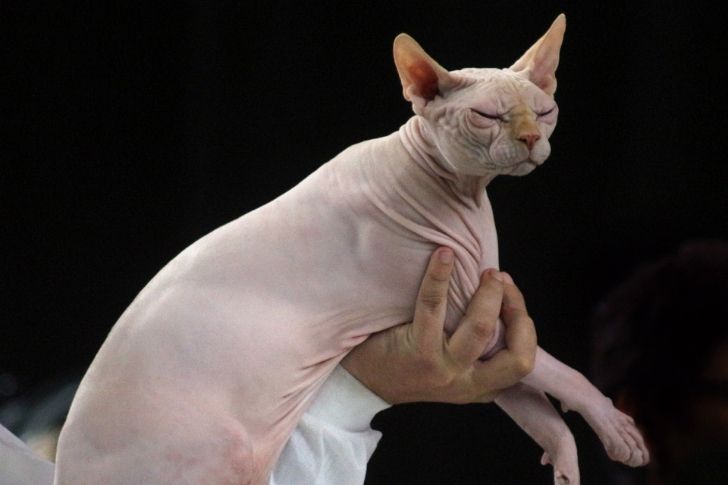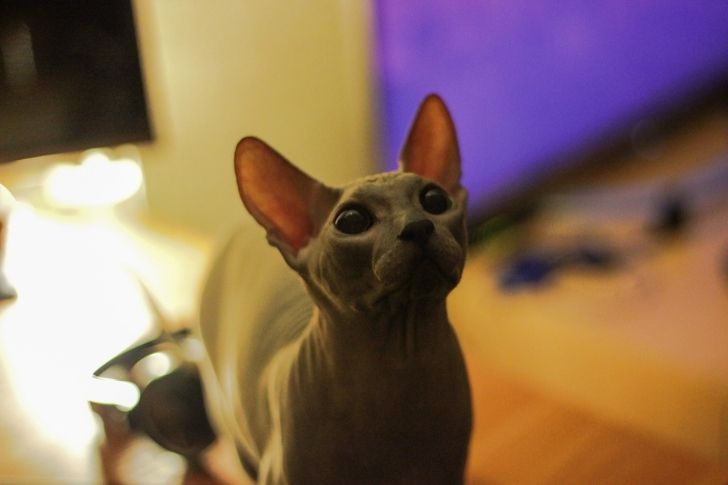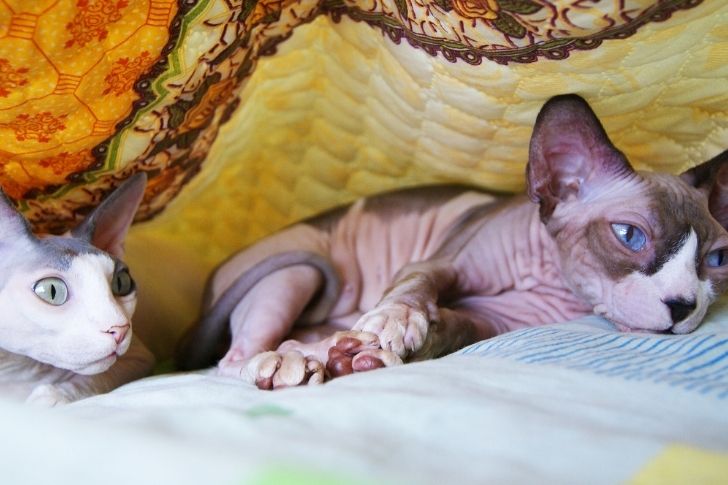The Sphynx Cat: Canadian Hairless Feline
The lack of fur is one of the most distinguishing characteristics of a Sphynx cat. The cats are not fully hairless, though, and are coated with soft, downy hair that resembles peach skin. It has a fine bone structure but is still muscular, with a barrel chest. The legs are long and muscular, and the barrel chest gives them a bow-legged look.
History and Origins
These hairless cats have been around for centuries, and in fact, the Aztecs are said to have kept them. The Sphynx cat is also the first hairless cat bred exclusively for that characteristic. In 1966, a pet cat in Ontario, Canada, gave birth to a hairless male kitten, which started the breeding program. Most Sphynx cats born today, on the other hand, are bred from three hairless kittens discovered in Toronto in 1978.

Personality
The Sphynx cat is gregarious, mischievous, people-oriented, and enjoys being the center of attention. They are cuddly, articulate, and playful. They like to sleep under the sheets with their owners. Their body temperature is a degree or two higher than that of common cats, and to compensate for the heat loss, they have voracious appetites.

Health
Similar to other cats, the Sphynx cat also has some common health issues. These are related to their breed, and compared to other cats, they have a higher chance of contracting these illnesses. Instead of getting health insurance and waiting for it to affect them, it would be best to know more about these diseases so you can try preventing them. Here are some of the most common illnesses of this breed:

Obesity
Obesity is a serious condition in cats that causes other illnesses, or worst, death. This information is more accepted and recognized now than it was a few decades ago, but still, too many pet owners continue to ignore the risks of excess weight on their animals.
Excess weight can lead to arthritis, diabetes, and other life-threatening disorders. Diabetes, an inherited disease, has a much higher chance of developing in overweight pets, and may not become a problem for a cat with the right weight.
Hepatic lipidosis, or also known as fatty liver, is another fatal disease in overweight pets. It can develop as fast as 48 hours – so make sure to watch when your overweight cat stops eating for any reason.
That’s why when you notice that they are getting bulkier, losing a few pounds can help boost agility and make them healthy.
Dental Disease
This is one of the chronic issues in pets, especially when its teeth aren’t cleaned every day. Food plaque hardens into tartar, which builds up in the visible areas of the teeth and ultimately contributes to inflammation of the gums and tooth roots, causing dental disease. Your pet can lose their teeth or have internal organ damage in serious cases of chronic dental infection.
Parasites
Not only are parasites dangerous for your pet, but also to you or your family. Some of these can be transmitted, so be sure to take them seriously. For your cat, these parasites can cause discomfort, pain, or worse, death. To make sure that it doesn’t get to the worst-case scenario, test for them on a regular basis. These can be detected through their stool, so get a fecal exam for your pet during its twice-a-year wellness exams.
Heart Disease
Cardiomyopathy, or heart muscle disease, may be inherited or developed as a result of other heart disorders. Hypertrophic cardiomyopathy (HCM), which is the most frequent type, is a thickening of the heart muscle caused by an overactive thyroid gland.
Dilated cardiomyopathy, or DCM, is another condition that may be caused by a taurine deficiency in the diet. Early detection of cardiomyopathy symptoms is important, but due to a cat’s natural propensity to mask infection, symptoms may be difficult to detect.
Routine Care, Diet, and Exercise
If you have a little kid, keep an eye on your cat. Shut the doors, clean up after yourself, and close off rooms as needed. This would keep your pet out of mischief, off of dangerous jumping platforms, and away from things it shouldn’t eat.
To avoid oil buildup on their skin, they need weekly washing and regular sponging. Wash the Sphynx cat’s teeth at least three days a week because they are prone to severe dental complications, as mentioned above. Examine their ears once a week for wax, dirt, or signs of infection, and clean as needed.
Regular play sessions that reinforce its innate ability to hunt and explore are needed. If you don’t keep this breed’s mind and body involved, it may lead to behavioral problems.

Recent Comments